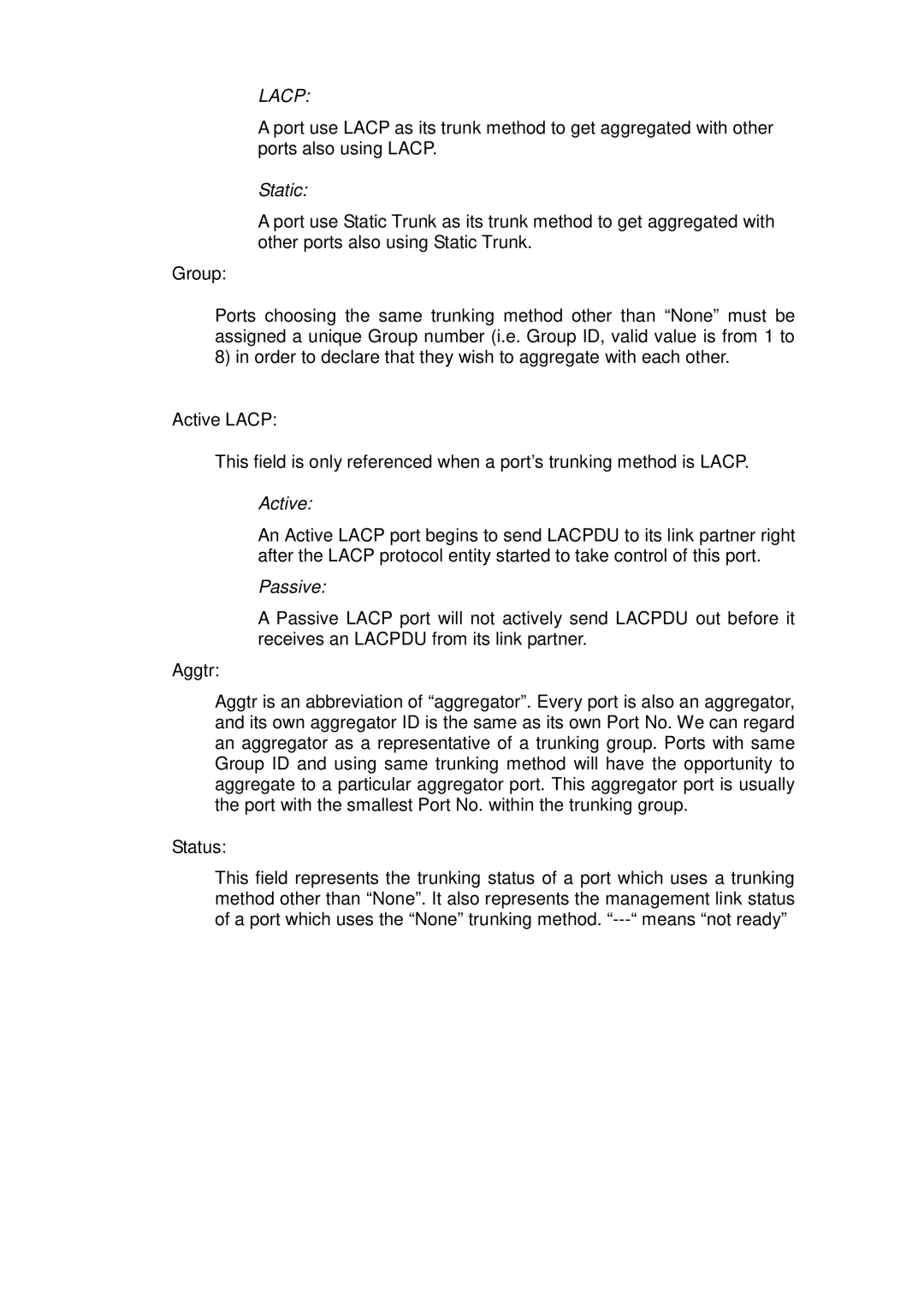LACP:
A port use LACP as its trunk method to get aggregated with other ports also using LACP.
Static:
A port use Static Trunk as its trunk method to get aggregated with other ports also using Static Trunk.
Group:
Ports choosing the same trunking method other than “None” must be assigned a unique Group number (i.e. Group ID, valid value is from 1 to 8) in order to declare that they wish to aggregate with each other.
Active LACP:
This field is only referenced when a port’s trunking method is LACP.
Active:
An Active LACP port begins to send LACPDU to its link partner right after the LACP protocol entity started to take control of this port.
Passive:
A Passive LACP port will not actively send LACPDU out before it receives an LACPDU from its link partner.
Aggtr:
Aggtr is an abbreviation of “aggregator”. Every port is also an aggregator, and its own aggregator ID is the same as its own Port No. We can regard an aggregator as a representative of a trunking group. Ports with same Group ID and using same trunking method will have the opportunity to aggregate to a particular aggregator port. This aggregator port is usually the port with the smallest Port No. within the trunking group.
Status:
This field represents the trunking status of a port which uses a trunking method other than “None”. It also represents the management link status of a port which uses the “None” trunking method. “-
